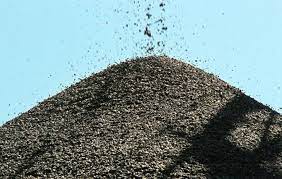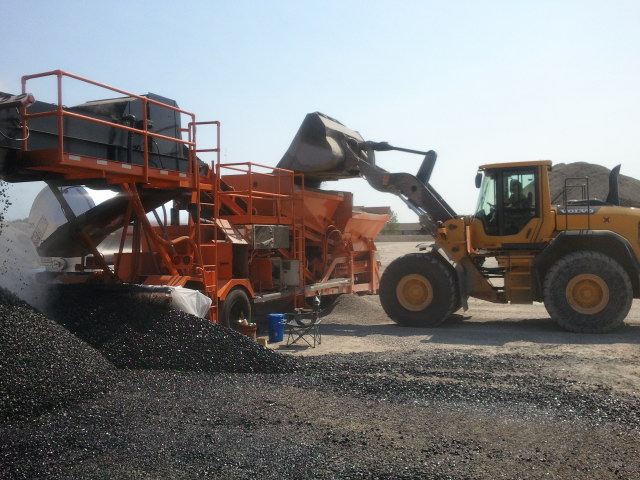NAPA Helps Answer: What is the Environmental Impact of Asphalt?

The asphalt industry has a long history of working with federal regulatory agencies, including the Environmental Protection Agency (EPA) and OSHA. Since the early 1990s, the EPA has done extensive testing on asphalt plant emissions and in 2002 removed this industrial sector from the “major source” category, identifying that emissions from asphalt plants are not an area of concern. (1) NAPA is the National Asphalt Pavement Association.
Understanding Reclaimed Asphalt Pavement (RAP) as a Clean Fill Material
In 2019, more than 97 million tons of RAP and 921,000 tons of reclaimed asphalt shingles (RAS) were used in new asphalt pavement mixes in the U.S. That year about 139 million tons of RAP and RAS were stockpiled for future use across the country. Reusing RAP in future pavements saved nearly 60 million cubic yards of landfill space during 2019. (2)

As America’s biggest recycler, millions of tons of asphalt pavement material is reclaimed each year during road widening and resurfacing projects, and nearly all of that material is reused. Incorporating reclaimed asphalt pavement (RAP) into new pavements reduces demands for virgin asphalt binder, helping to keep costs down as well as improving the environmental footprint of projects.
Not all RAP is recycled into new asphalt pavements, however. Occasionally, the question arises as to whether or not RAP can be used as “clean fill.” Although obviously not the highest and best use of this vital resource, regulations regarding when and where RAP can be placed as fill material vary from state to state and can be complex. In most instances, RAP falls under state solid-waste requirements and purview.

Material that is Recycled is Not Considered Solid Waste
Because state environmental agencies often have more restrictive solid-waste disposal regulations than the federal Environmental Protection Agency, it is important to understand how RAP is defined. U.S. EPA classifies RAP as construction and demolition (C&D) debris that is part of the federal solid-waste chain. Federal regulations also identify that if materials are “recycled,” then they are not considered solid waste. However, there is a “speculative accumulation” federal definition that requires a 75 percent annual “turnover” to maintain the recycled material classification vs. solid waste.

There are NO Harmful Compounds Leached from RAP
RAP is not, and never has been, considered a “hazardous” solid waste. Years of leaching studies show that there are no harmful components leached from RAP under the most stringent waste definition extraction conditions. (See NAPA Special Report 190: “Reclaimed Asphalt Pavement (RAP) Stockpile Emissions and Leachate.”) In general, it is acceptable for RAP to be used as a road material — as part of the base, recycled back into pavement, etc. — both from a federal and state perspective. Although U.S. EPA does not appear to have a strict definition of “clean fill”, specific requirements do apply to solid-waste materials applied to land.
The bottom line is that each state’s environmental agency will likely dictate whether or not RAP can be used as a clean fill material. Under normal use and circumstances, RAP should never be considered as hazardous waste. (3)

See Also
- NAPA Special Report 190: “Reclaimed Asphalt Pavement (RAP) Stockpile Emissions and Leachate http://www.asphaltpavement.org/images/stories/SR-190revised.pdf
- IS-123: Recycling Hot-Mix Asphalt Pavements http://store.asphaltpavement.org/index.php?productID=171
Sources:
- https://www.asphaltpavement.org/expertise/health-safety/environmental
- Williams, B.A., Willis, Richard & Shacat, Joseph (2019). Asphalt Pavement Industry Survey on Recycled Materials and Warm-Mix Asphalt Usage: 2018 (IS 138) National Asphalt Pavement Association, Greenbelt, Maryland.
- https://www.asphaltpavement.org/uploads/documents/SR204-RAP_as_Clean_Fill.pdf
Environmental & Sustainability Terms
- GHG
- Greenhouse Gases
- Many gasses have global warming properties (GHG). The majority of GHG emissions from industrial, commercial, and institutional activities are CO2, CH4, and N2O.
- CO2
- Carbon Dioxide
- Carbon dioxide is a natural greenhouse gas, commonly produced by the air we exhale. At higher levels, CO2 affects productivity, sleep and infectious disease.
- Some believe carbon dioxide and methane are the biggest drivers of global warming related to human activities
- CO2 is the reference gas for Global Warming Potential (GWP) compared to other GHG gases. GWP = 1
- CH4
- Methane
- Methane is a colorless, odorless, flammable gas that is the simplest hydrocarbon and is the major constituent of natural gas
- Some believe carbon dioxide and methane are the biggest drivers of global warming related to human activities
- CH4 GWP = 25 (25 times greater warming potential than CO2)
- N2O
- Nitrous Oxide
- Nitrous oxide, commonly known as “laughing gas,” is a chemical compound with the chemical formula N2O.
- It is a colorless non-flammable gas at room temperature, with a pleasant, slightly sweet odor and taste.
- It is used in surgery and dentistry for its anesthetic and analgesic effects.
- Some believe it may be the most important greenhouse gas after methane and carbon dioxide and the biggest human-related threat to the ozone layer
- N2O GWP = 298 (298 times greater warming potential than CO2)
- CO2e
- Carbon dioxide equivalent
- This is the number of metric tons of CO2 emissions with the same global warming potential as one metric ton of another greenhouse gas, and is calculated using Equation A-1 in 40 CFR Part 98





Recent Comments